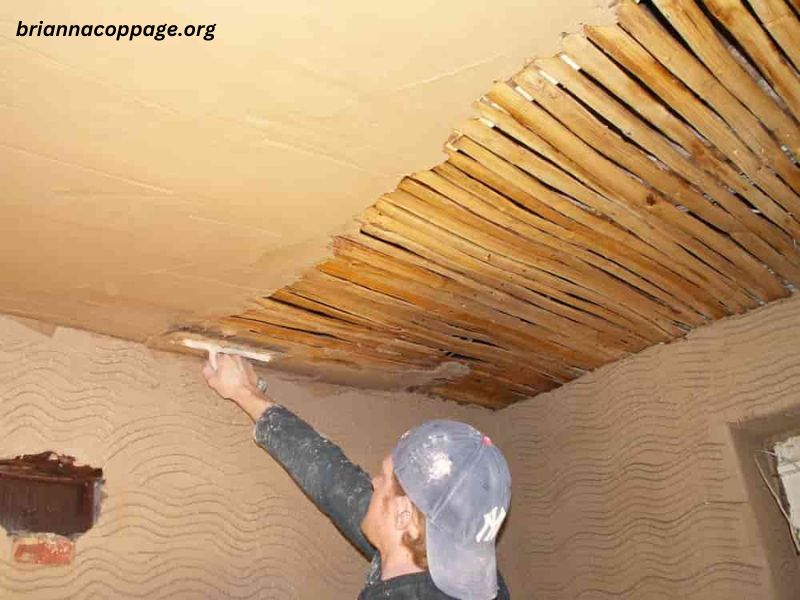When undertaking renovations or repairs on older homes, one of the challenges you might face is finding ceiling joists beneath plaster lath and plaster. Unlike modern drywall ceilings, which are relatively easy to navigate, lath and plaster ceilings can make locating joists a bit trickier. Whether you’re planning to install fixtures, hang heavy objects, or make structural modifications, finding these joists is crucial for the success of your project. In this guide, we will explore the methods and tools needed to locate ceiling joists beneath plaster and lath, with step-by-step instructions to ensure a smooth and efficient process.
What Are Ceiling Joists and Why Are They Important?
Ceiling joists are horizontal structural elements that span across the ceiling of a room. They are typically made from wood or metal and provide the support for the ceiling material, such as plaster, drywall, or lath and plaster. Ceiling joists not only support the weight of the ceiling but also help distribute the load of anything attached to the ceiling, like light fixtures, ceiling fans, or shelves.
Understanding where these joists are located is crucial when working with plaster and lath ceilings. Plaster and lath is a traditional building material made of horizontal wooden slats (lath) covered with layers of plaster. While durable, plaster and lath is more challenging to work with compared to modern drywall, as it is often thicker and harder to penetrate. Locating the joists allows you to securely anchor any fixtures and avoid damaging the delicate plaster.
Methods to Find Ceiling Joists Beneath Plaster Lath and Plaster
There are several methods you can use to locate ceiling joists beneath plaster and lath, from using simple hand tools to more advanced electronic devices. Below, we’ll cover the most common techniques, with a focus on accuracy and safety.
1. Use a Stud Finder
A stud finder is one of the most efficient and reliable tools for locating joists behind plaster and lath. While stud finders are typically used for drywall, many models are capable of detecting the density differences between plaster, lath, and the joists behind them.
How to Use a Stud Finder:
- Step 1: Turn on the stud finder and calibrate it according to the manufacturer’s instructions. Some stud finders may require you to hold the device against the wall or ceiling to calibrate it before use.
- Step 2: Slowly move the stud finder across the ceiling in a horizontal direction. Most stud finders will beep or light up when they detect a joist.
- Step 3: Mark the location of each joist as you go along. Make sure to note the center of each joist for accurate positioning of screws or nails.
Pro Tips:
- For best results, start from a known point, such as the corner of the room or a light fixture, to ensure you are in the correct area.
- If you encounter any issues with the stud finder, you may need to adjust the sensitivity setting.
2. Knock and Listen
Another low-tech but effective method to locate joists is by tapping or knocking on the ceiling with a hammer or mallet and listening for the sound of the joist.
How to Knock and Listen:
- Step 1: Use a small hammer or mallet to gently tap on the ceiling.
- Step 2: Move across the ceiling, making knocks every few inches.
- Step 3: Listen carefully to the sound. Areas where the ceiling is attached to a joist will produce a solid, dull sound, while spaces between the joists will produce a hollow or more resonant sound.
Pro Tips:
- The knocking method works best in areas where the plaster is not too thick or covered by many layers.
- Mark the joist locations where the sound is solid, and measure between them to estimate the spacing of the joists (typically 16 or 24 inches apart).
3. Measure From a Wall or Corner
In many cases, ceiling joists are spaced either 16 or 24 inches apart. If you know the standard spacing of joists in the building, you can measure from a wall or corner to find their location.
How to Measure:
- Step 1: Start from a corner or wall, where the first joist is typically located.
- Step 2: Measure out 16 inches from the wall. If you don’t locate a joist there, try 24 inches. Continue measuring in 16- or 24-inch increments along the ceiling.
- Step 3: Use your stud finder or tapping method to confirm the exact locations.
Pro Tips:
- When measuring, be sure to take accurate measurements and account for potential irregularities in older homes.
- Measuring can be more difficult in irregularly spaced joists, but it’s still an effective technique when the standard spacing is followed.
4. Look for Plaster Defects or Indentation Patterns
Over time, plaster ceilings can develop small cracks or indentations along the line where they are attached to the ceiling joists. By examining the surface of the ceiling carefully, you might be able to find these defects that correspond to the locations of joists.
How to Look for Defects or Patterns:
- Step 1: Inspect the ceiling closely for any visible cracks or seams. These often appear where the plaster was applied over the lath and is pulled tight against the joists.
- Step 2: Look for subtle indentations in the plaster where the nails or screws that hold the lath to the joists are located.
Pro Tips:
- The indentations or cracks may be subtle, so use a flashlight or angled light to highlight them.
- If you find a pattern of cracks, these can serve as clues to the locations of joists.
5. Drill Small Test Holes
If all else fails, you can drill small test holes in the ceiling to locate the joists. While this method involves creating small holes in the plaster, it can be highly effective for pinpointing joist locations with high accuracy.
How to Drill Test Holes:
- Step 1: Select a drill bit that is smaller than the diameter of the joist, such as a 1/8-inch bit, to avoid damaging the plaster too much.
- Step 2: Drill a small hole in the ceiling and check for resistance. If you hit a solid surface, you’ve likely hit a joist.
- Step 3: Once you’ve found a joist, measure from the hole to the next location where you believe a joist might be, and repeat the process.
Pro Tips:
- Always start with a very small drill bit to minimize damage to the ceiling.
- Avoid drilling too many holes in the plaster, as this can result in more extensive repairs later.
6. Use a Magnetic Joist Finder
Magnetic joist finders are handheld devices that use magnets to detect nails or screws in the lath that attach to the ceiling joists. These can be more effective than other methods, as they don’t rely on detecting the material but instead pick up on the fasteners that secure the lath to the joists.
How to Use a Magnetic Joist Finder:
- Step 1: Sweep the magnetic finder across the ceiling.
- Step 2: The device will detect metal fasteners embedded in the plaster and lath and alert you to the location of the joists.
- Step 3: Mark the location of each joist detected by the magnet.
Pro Tips:
- Be sure to sweep the magnet slowly and methodically to detect all fasteners.
- Magnetic finders are best used in areas where the ceiling lath is still intact and held by nails or screws.
Conclusion
Finding ceiling joists beneath plaster lath and plaster is an essential skill when working in older homes. Whether you’re installing a fixture, making repairs, or planning a renovation, knowing where the joists are located will ensure that your work is secure and structurally sound. By using methods such as a stud finder, knocking and listening, measuring from walls, looking for plaster defects, or even drilling test holes, you can accurately locate the joists without damaging your ceiling.
By following these techniques and tips, you will be able to safely and efficiently complete your project. Keep in mind that older homes may have unique challenges, but with the right tools and knowledge, you’ll be able to tackle the task of locating ceiling joists with confidence.






